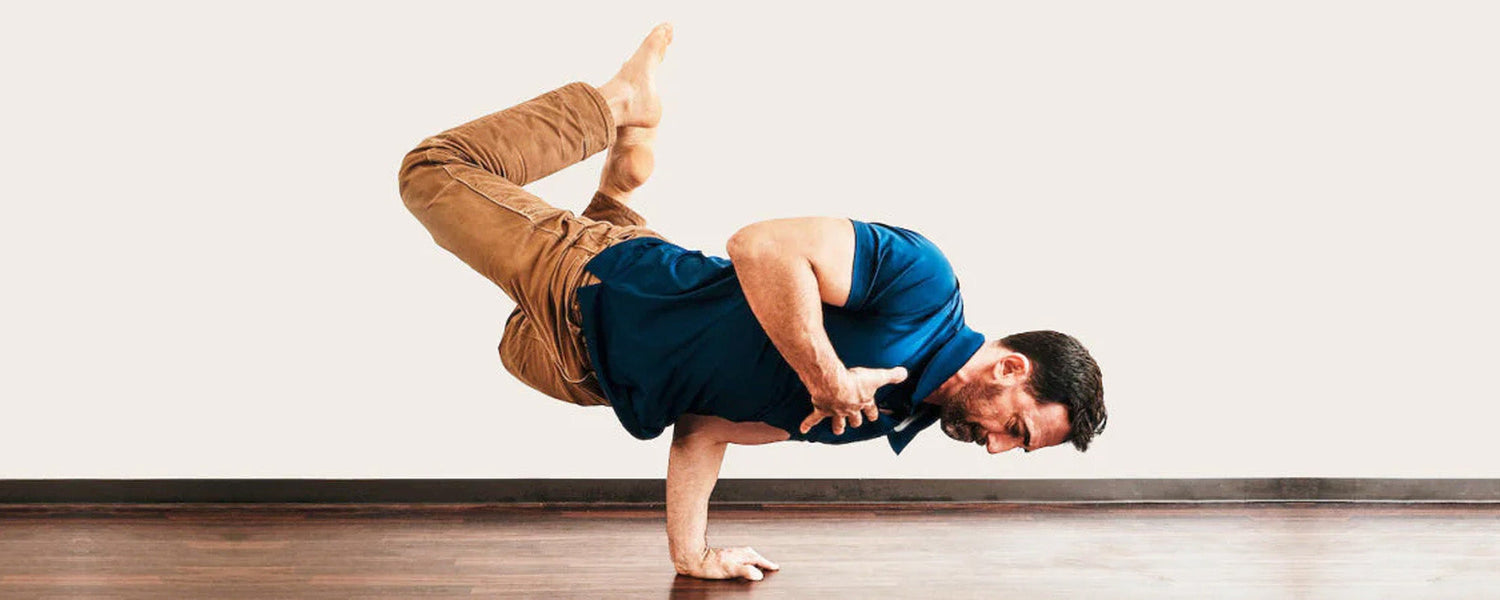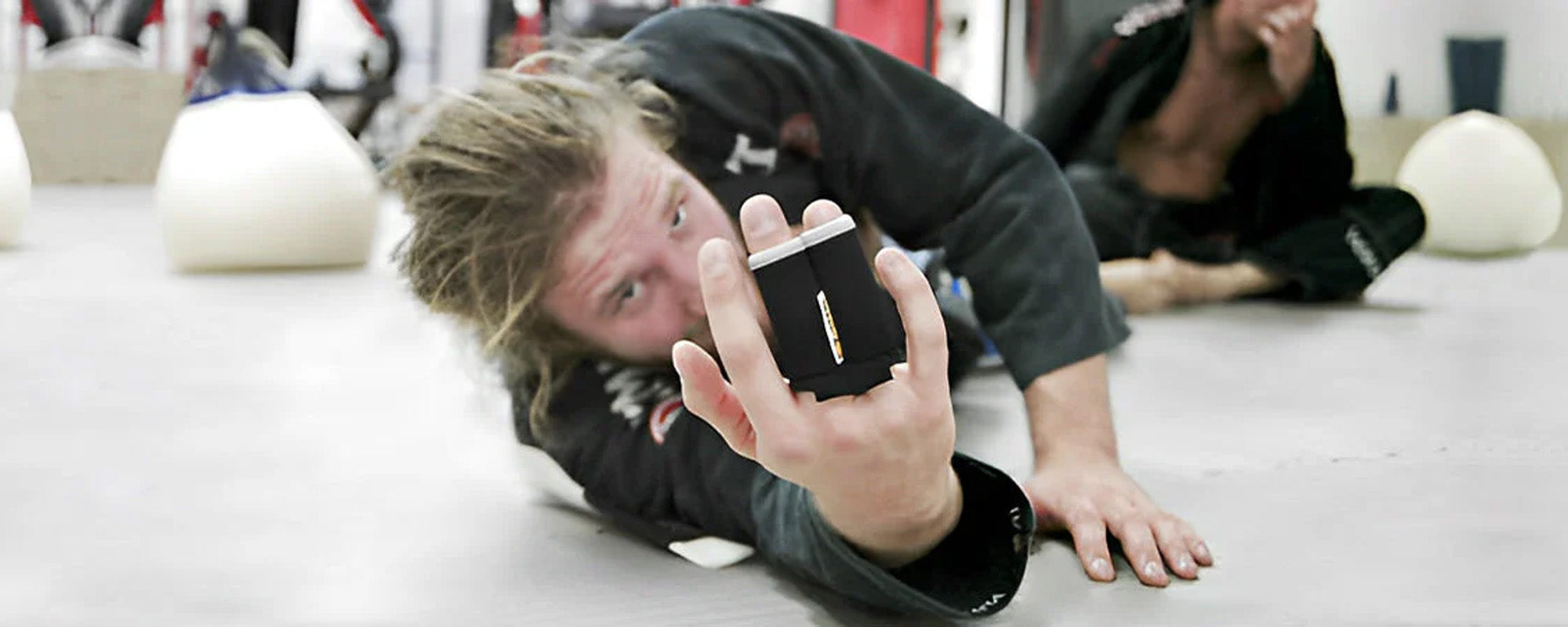Table of content
Gymnastics is a fantastic way to supplement your strength training for BJJ. It helps develop endurance, power, coordination, and balance, which are crucial for becoming a successful grappler. So, what kinds of gymnastics are helpful, and how can you incorporate them into your BJJ training?
While it may seem like a daunting task to get started, there are several ways you can ease into it. Give it a try and see how it can help take your BJJ game to the next level.
1. What is Gymnastics?
Gymnastics is a sport that requires strength, flexibility, agility, coordination, and balance. It is often considered a challenging sport because of the extreme mobility and required extended physical elasticity.
2. Why Gymnastics is The Best Choice For BJJ Strength Training
If you're looking for a comprehensive strength training program for Brazilian Jiu-Jitsu, gymnastics is an ideal option. It is a highly effective form of strength training that can help you develop the required mobility, strength, and coordination to execute BJJ moves and techniques.
Here are four reasons why gymnastics is the best option for BJJ strength training:
2.1. Develops Functional Strength
The strength gained from gymnastics training will assist you in executing the complex BJJ techniques with great elasticity and mobility. Unlike weightlifting, which often focuses on isolated muscle groups, gymnastics emphasizes the functional patterns of movements. This means you will be more powerful in handling the demands of a BJJ match.
2.2. Builds Explosive Power
To be successful in BJJ, you need to generate and transfer a lot of power. This is where gymnastics training can help. The plyometric and explosive movements common in gymnastics are ideal for developing the type of power that will give you an edge on the mat.
2.3. Improves Coordination & Agility
Gymnastics can lead to developing better coordination and agility. The constant movement and the need to control your body in space can enable you to create balance and coordination that will come in handy when trying to take down an opponent.
2.4. Gymnastics is Fun!
Let's face it, BJJ can be a challenging sport. It can be grueling, both mentally and physically. Training for BJJ can sometimes feel like an intense chore. But gymnastics is different. It's a fun and exciting way to train that will leave you motivated and excited to get back on the mat.
So, you can use gymnastics to become freakishly strong for BJJ because it can help you become more flexible, coordinated, powerful, and explosive. It's a practical, fun, and exciting way to train.
3. Gymnastic Exercises for BJJ Strength Training
One of the best things you can do for a better BJJ game is to build core strength. Gymnastics exercises are ideal for gaining immense strength. BJJ practitioners can try the following exercises:

3.1. Pull-ups
Pull-ups are a gymnastics move often used in Brazilian Jiu-Jitsu training sessions. This move requires the athlete to start upright by hanging from a bar, then lower themselves down until their chin is leveled with the bar. From here, BJJ practitioners must slowly pull themselves back up to the starting position.
There are many benefits of performing pull-ups. This move will help to develop upper body strength, which is essential for BJJ athletes. In addition, it will also improve grips and increase.
3.2. Dips
Dips are a fundamental movement in gymnastics and can be applied to various other sports, such as Brazilian jiu-jitsu. They are best for developing strength and power.
There are many different dips, but the two most common are the pommel horse dip and the rings dip. The pommel horse dip is performed with one hand on the pommel and the other on the ground. The ring dip is performed with both hands on the rings.
Dips are an excellent exercise for strengthening the shoulders, chest, and triceps. They can also improve your coordination and balance. While performing dips, keeping your body close to the apparatus and maintaining good balance and form throughout the movement is essential.
3.3. Muscle-ups
Muscle-ups help boost upper body strength and can be used to set up other moves. To do a muscle-up, you must start upright with your arms above your head. You must pull yourself up from here so your chin is over the bar. Once your chin is over the bar, you must press yourself up and extend your arms.
3.4. Handstand Push-ups
Handstand push-ups are one of the useful gymnastics exercises opted by Brazilian Jiu-Jitsu practitioners. To do a handstand push-up, start in a handstand position with your hands shoulder-width apart and your feet together. Lower your head to the floor, then press back up to the starting position. You can also do this exercise with one arm at a time.
Start with 3 sets of 5 reps and work your way up to 3 sets of 10 reps—this exercise aids in building strength in your shoulders, upper chest, and arms.
3.5. Ring Dips
Ring dips involve holding yourself up on two rings and then dipping your body down and back up again. It can be performed with straight arms or bent elbows, and it can be done with one leg extended in front of you or with both legs tucked under you.
It will help you to build upper body strength, and it can also improve your coordination and balance. If you're looking for a challenge, try adding ring dips to your BJJ training routine.
3.6. Bar Dips
It is advantageous to increase your flexibility and strength. Bar dips are performed by holding onto a bar with your hands. Then, you have to dip your body down so that your head goes below the level of the bar.
There are many benefits to doing bar dips, especially for those who train in BJJ. This move can improve your grip strength, which is vital for grappling. It can also help increase your shoulder and tricep strength, which can be helpful when trying to submit an opponent. Additionally, this move can help improve your overall muscle strength, coordination, and balance.
3.7. L-sits
L-sits can help to build core strength and stability. To do an L-sit, you must be in a handstand position with your legs straight and your hips over your shoulders. You will slowly lower your legs from here until they are parallel to the ground. Hold this position for as long as you can.
3.8. Planche
First, you must build strength in your arms and shoulders. You can do this by doing push-ups and other upper-body exercises. It involves holding your body in a balanced handstand position with your hands on the ground and your feet in the air. Once you have the power, you can start practicing the move with ease.
There are different ways to do a planche, but the most common is to start in a push-up position and then raise your hips so that your body forms a straight line from your head to your feet. You can also try variations of this move, such as putting one leg out to the side or doing a one-armed planche.
3.9. Front Lever
The front lever is a gymnastic exercise that requires great strength and coordination. It is often used as a test of strength in gymnastics competitions and a move in BJJ. You can perform the front lever with either one or two arms and with either leg extended or bent.
The move starts from a hanging position, and the gymnast must pull themselves up, so their body is horizontal. The front lever is challenging to master, but it can be helpful for BJJ practitioners to better their strength and coordination.
3.10. Back Lever
The Back Lever is a gymnastics move that involves hanging from a bar with your back facing the ground and your legs extended straight out in front of you. The move requires significant strength and coordination, but it can be a great addition to any BJJ practitioner's arsenal.
It strengthens the core muscles in your back and shoulders, which are vital for maintaining good posture and avoiding injuries while grappling. Additionally, the move increases your flexibility and range of motion, both of which can help you escape bad positions and submit opponents.
Each of these exercises will help you develop different aspects of strength that are important for BJJ. For example, pull-ups will help you develop back and arm strength, while L-sits will help you build core strength.
4. What to Focus on in Your Gymnastics Training?
As a gymnast, you know that there are many things you need to focus on during your training. From perfecting your routines to increasing your strength and flexibility, it can be easy to get overwhelmed.
If you want to be the best gymnast you can be, there are three key areas you should always focus on in your training:
- Strength
- Flexibility
- Conditioning
Focusing on these three areas will improve your gymnastics skills and reduce your risk of injury while playing BJJ techniques.
5. Tips to Get Started With Gymnastics Training for BJJ
Whether you're a seasoned athlete looking for a new challenge or a complete beginner looking to get started in the world of gymnastics, training for this physically demanding sport can be daunting.
With the right approach and hard work, you can start learning and progressing in gymnastics. Below are the tips that can help you get started with gymnastics training for BJJ:
5.1. Start With The Basics
If you're new to gymnastics, start with the basics and gradually work your way up. Make sure to warm up before you start performing the exercise. And try to do only a little too soon, or you'll risk injury.
5.2. Train Regularly
Like any sport, regular training is key to success in gymnastics. Try to train at least three times a week, if not more.
5.3. Listen To Your Body
Be sure to listen to your body and take breaks and recovery time when needed.
5.4. Find A Good Gym
A good gym offers experienced and qualified coaches who can help you learn the proper techniques and progress at your own pace.
5.5. Start Slow
Don't try to do too much too soon. Listening to your body and taking things slowly is essential, primarily, you need to get used to such an intense workout.
5.6. Choose A Suitable Class
Once you've found a gym you're comfortable with, it's time to choose a suitable class.
6. FAQs
6.1. How Should I Lift Weights for BJJ?
Regarding weightlifting for BJJ, make sure your lifts are focused and specific. Try to do weight lifting according to your level. If you're a beginner, lifting too much weight will do more harm than good. Start light and work your way up gradually.
6.2. Is BJJ a Good Workout?
BJJ is a full-body workout that will increase your heart rate and help you build muscle. The fantastic thing is that you can burn up to 600 calories in a single session, and you don't need any special equipment or a gym membership to do it.
It helps relieve stress, improve your flexibility, and meet new people. And because it's such a practical skill, you can use it for self-defense in your daily routine.
6.3. Would Gymnastics Ever Be Useful in a Fight?
In a word, Yes! While most people think of gymnastics as an activity for young girls to perform at meets and competitions, the truth is that gymnastics can be incredibly useful.
Take Brazilian Jiu-Jitsu (BJJ), for example. This martial art uses many of the same principles in gymnastics, including leverage, balance, and momentum.
7. Last Words
Gymnastics can be a great form of strength training for BJJ athletes. It is essential to work with a coach to ensure that you are doing the exercises correctly and safely.
Using gymnastics exercises for BJJ is a win-win deal because it gives you strength and flexibility simultaneously. It might help you become the most powerful practitioner in BJJ sessions. To get the desired outcomes, go with the basic exercises and then move to advanced gymnastics.
Photo Credit: @seekprogress












Leave a comment
This site is protected by hCaptcha and the hCaptcha Privacy Policy and Terms of Service apply.